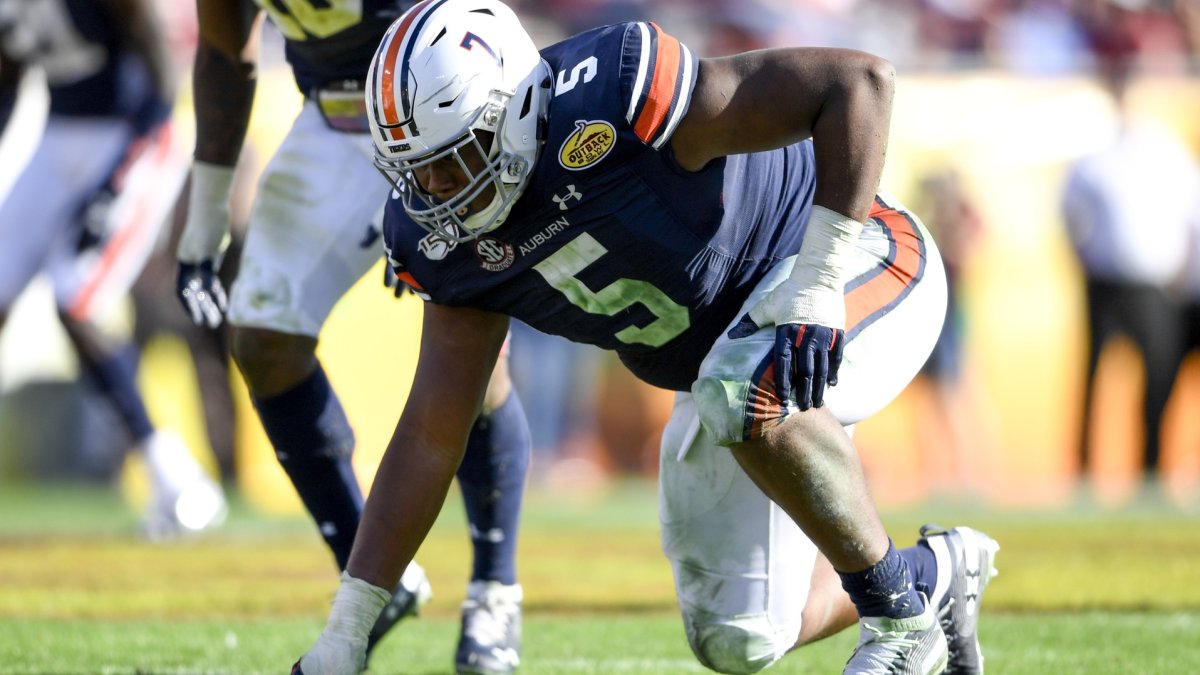In the second of our post-Combine projection articles powered by our friends at AWS, we take a look at Auburn defensive tackle Derrick Brown. Brown was terrific in 2019, earning over a 90.0 PFF grade on just over 650 snaps and generating 35 total pressures, 36 stops and not a single missed a tackle the entire time. In our Big Board prior to the combine, Brown was considered the 11th-best prospect in the draft and the best interior defensive player.
[Editor's note: PFF's 2020 NFL Draft Guide is live! Subscribe to PFF's EDGE or ELITE subscription today to download your copy.]
Some of this changed in Indianapolis, where Brown showed a disappointing effort in the 40-yard dash (5.16 seconds) and the vertical jump (27 inches). His 3-cone was the worst of any defensive lineman. He is still slated to go ninth in Mike Renner’s newest mock draft, though, showing just how well his tape looked in the SEC.
How does his tape, and his underwhelming combine performance, project to the NFL level using our simulation, though? As we’ve written about recently, our college-to-pro projections take our play-by-play college data, adjust for context (game state, opponent strength, assignment) and project a player’s performance probabilistically in the future, using a composite score for their athleticism using principal component analysis. Given that different defenses ask players to do different things, we’re able to toggle these projections by adjusting context for more accuracy.
How Brown Projects as a Pass Rusher
As much as teams like to give lip service about stopping the run, if a player cannot consistently find success rushing the passer, they should not be considered a first-round prospect. Unfortunately for Brown, he projects as merely an average pass-rusher for a defensive tackle, with comps equal to Andrew Billings (0.04 average WAR during his rookie deal), Sheldon Day (0.02), Kendall Reyes (-0.10), Jarvis Jenkins (-0.06), Earl Mitchell (0.03) and John Hughes (0.02). These aren’t exactly the who’s who of pass rushers on the interior, and this projection puts Brown near the middle of the 2020 draft class in terms of predicted productivity, behind players like Raekwon Davis and Khalil Davis, but ahead of Javon Kinlaw.
Exclusive content for premium subscribers

WANT TO KEEP READING?
Dominate Fantasy Football & Betting with AI-Powered Data & Tools Trusted By All 32 Teams
Already have a subscription? Log in



 © 2025 PFF - all rights reserved.
© 2025 PFF - all rights reserved.